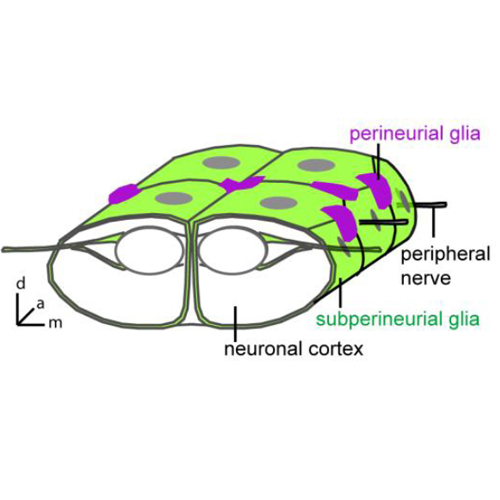Dynamic analysis of the mesenchymal-epithelial transition of blood-brain barrier forming glia in Drosophila
20-Jan-2017
Biology Open, Online ISSN 2046-6390, doi: 10.1242/bio.020669
Biology Open, online article
During development, many epithelia are formed by a mesenchymal-epithelial transition (MET). Here, we examine the major stages and underlying mechanisms of MET during blood-brain barrier formation in Drosophila. We show that contact with the basal lamina is essential for the growth of the barrier-forming subperineurial glia (SPG). Septate junctions (SJs), which provide insulation of the paracellular space, are not required for MET, but are necessary for the establishment of polarized SPG membrane compartments. In vivo time-lapse imaging reveals that the Moody GPCR signalling pathway regulates SPG cell growth and shape, with different levels of signalling causing distinct phenotypes. Timely, well-coordinated SPG growth is essential for the uniform insertion of SJs and thus the insulating function of the barrier. To our knowledge, this is the first dynamic in vivo analysis of all stages in the formation of a secondary epithelium and of the key role trimeric G protein signalling plays in this important morphogenetic process.











